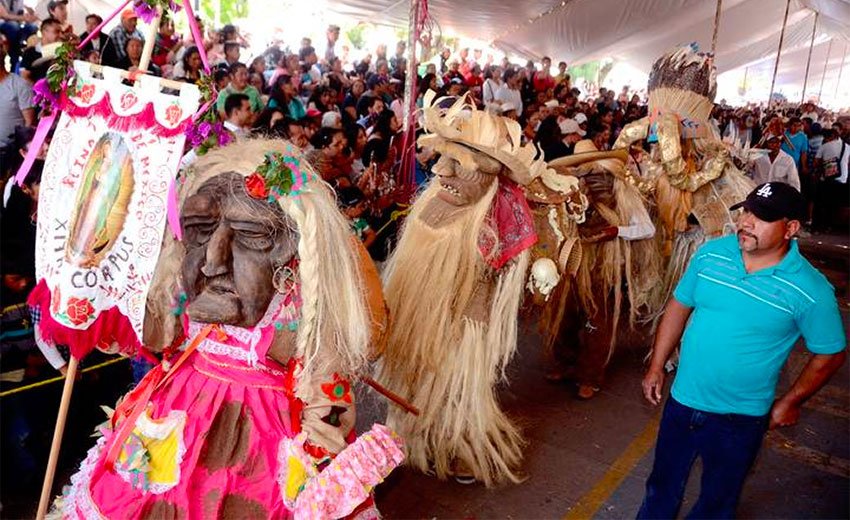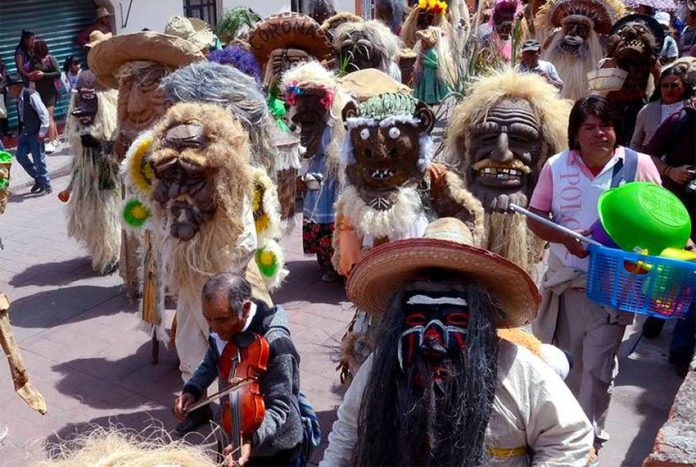The state of México town of Temascalcingo was transformed Thursday for a grand fiesta as residents donned masks and danced in a plea to the heavens to open and unleash rains for thirsty crops.
Known for being the birthplace of celebrated landscape painter José María Velasco, the town celebrates the Catholic feast day of Corpus Christi, held 60 days after Easter, but fuses it with older pre-Columbian traditions of ceremonies to end drought and ask for good harvests.
Every year, the festivities begin on Wednesday when dancers of all ages from each of the pueblo’s neighborhoods take to the streets, their faces covered by larger-than-life masks handcrafted from cactus fibers to recall the features of aged ancestors.
As they dance through the streets of Temascalcingo to the music of a violin, drums and bells, the masked dancers, called Xitas, are joined by another dressed as a bull with a cob of corn in its mouth to symbolize fertility.
On Thursday, the Xitas are once again called into the streets by church bells to accompany each neighborhood’s patron saint to altars erected specially for the celebration. After prayers of thanks, the fiesta is rejoined by all the residents, who dance and share freshly prepared mole, tortillas, beans, chicken in pork skin and pulque.

Later in the day, the dancers throw candy to young children before everyone gathers in a large circle for a ritual theater and dance presentation that symbolizes the circle of life for the town’s crops and residents.
Legend has it that the unique festival began long ago when, after a series of serious droughts which were thought to be a divine punishment, all the pueblo’s residents fell asleep and received a vision from God, who instructed them to begin to dance to bring the rains. During the annual rain dances, the residents began to use their famous masks to symbolize the wisdom of the elderly.
However, other sources discount the myth, asserting the existence of records documenting the unique fusion of the Catholic feast and pre-Hispanic traditions from as far back as 1526 — just one year after Hernán Cortés ordered the death of the last Aztec emperor, Cuauhtémoc.
Source: Agencia NVM (sp), El Sol de Toluca (sp)
